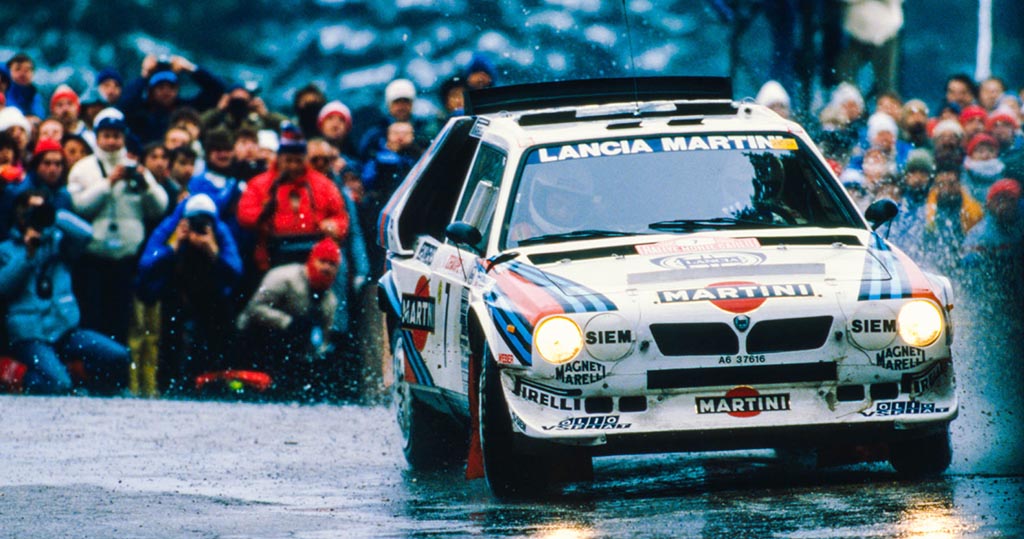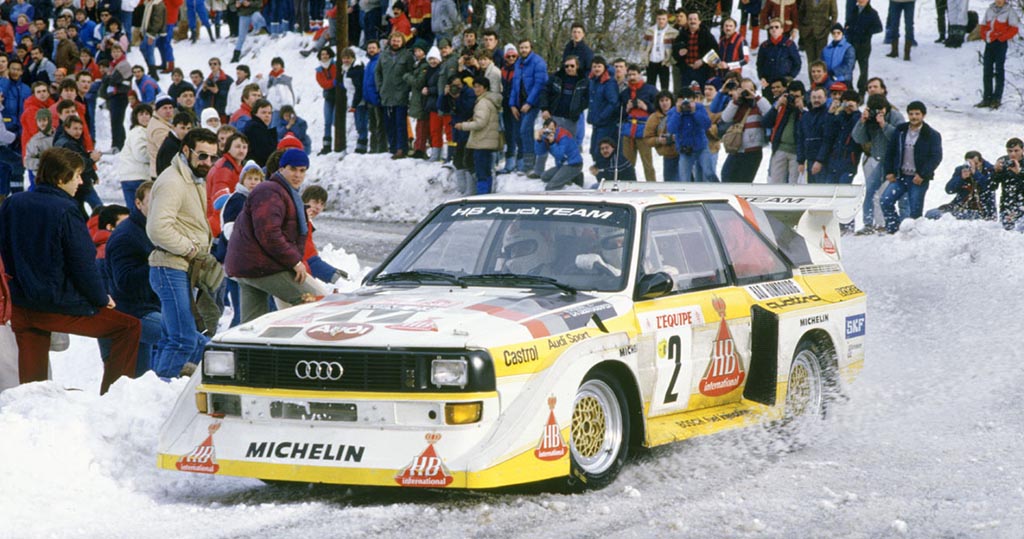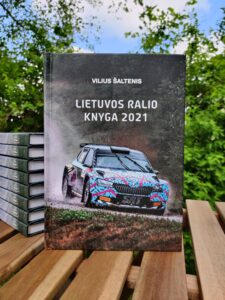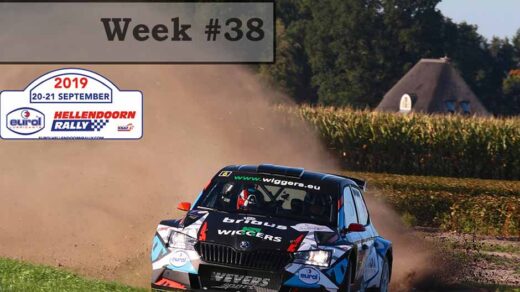This record, like many in Rally Week, will take you to another place instead of planned. I’m sure you know perfectly well how the opening ceremony of the WRC season took place this year. And you know, 2021 is the end of the current WRC car era. This story will be about the opening rally of the end of the other World Rally Championship car group – the 1986 Rallye de Monte Carlo.



Juha Kankkunen once said his legendary phrase – “WRC is for the boys, Group B was for men”. No matter how incomparable it is, but looking at what’s going on in the modern era and what’s been going on before, plus adding an emotional “it used to be better in old days” background – well there Men and Women were worth writing about. And what was going on there at the time is now completely incomprehensible even with a whiskey in a glass or a cup of coffee.

In 2021, the length of the Monte Carlo special stages was 257 kilometers and this is the lowest number in history. Normally, this rally is one of the longest on the calendar, but from 2019 the mileage is getting ridiculously low. In 1986, Monte was the longest in history – a modest 881 km and 36 special stages. Start on Sunday – finish on Friday. The length of the road sections also was different – 1392 km this year and 3102 km in the eighty-sixth. This year, due to curfew in France, the crews had to start very early in the morning – e.g. 6.10. In the old days, a morning cup of coffee was usually drunk much later. However, the last special stages of the day started late. Sometimes even 23.30. But this is nothing compared to the last day of the 1986 Monte Carlo Rally. The last section with the 11 stages of this rally started at noon on Thursday with the first participant stood at the last stage of the rally at about 6.00 in the morning. Crews drove all day and all night on snow-capped, icy, and crowded mountain roads in south-eastern France with cars that were at least “comfortable” to drive.

The liaisons between the stages were also very far away at the time from how things are going now. On the sidewalks of the regular road, the team mechanics repaired the sports cars. And when repairs took some extra time, crews had to hurry up to arrive at time control points on time. Therefore, there were not one and not two cases when in liaisons between stages, racers drove faster on open public roads than in the special stages. These phenomena often resulted in accidents and this was completely normal.

Here is another example of the complex logistics of this rally. The Austin Rover WRT team in Monte Carlo had two new MG Metro 6R4 cars driven by Britain’s Tony Pond and Malcolm Wilson. Prior to the seventh special stage, T. Pond complained about steering problems. The problem was that due to the quality of the roads, which, among other things, were completely crowded with spectator cars, the team’s service truck and the team were late in arriving at the place where the MG Metro cars were to be serviced. It seemed that the mechanics had managed to fix T.Pond’s car in twice as short a time before he sat in it and after driving several hundred meters, had an accident due to the same steering mechanism. The mechanics started repairing the car again, but it took a while and the British were late to the time checkpoint for 25 minutes and dropped to 123rd position. And his teammate M. Wilson was in ninth place at the time. This resulted in an almost two-hour gap between M. Wilson and T. Pond, which meant that the service team could no longer serve both crews. For example, after repairing M. Wilson’s car, the service team would have to wait 2 hours for another member. But then the service team would no longer be able to arrive on time for M. Wilson’s next service. Therefore, T. Pond had to withdraw from the competition so that another member of the team would have the opportunity to continue the competition in full conditions. While this tactic initially proved to be correct, as M-Sport team founder M. Wilson had even reached 5th place, unfortunately, the MG Metro gearbox quickly fell apart, leaving the British without the rear-wheel drive and eventually without the front.

An unpleasant incident at the road section also occurred for the 1986 Monte Carlo Rally winner Henri Toivonen. In the road section, the spectator car lost control and crashed into the Henri Lancia Delta S4. It ended in a damaged wheel, leaking oil radiator, a hugely crashed bodykit, and injuries to crew members. The mechanics raised Lancia as much that it could continue to drive, and the crew’s injuries were dealt with painkillers. Throughout the rest of the rally, the mechanics continued to patch up the extremely poor-looking car, but as Mr. Toivonen said himself – it was more reminiscent of a banana than a car. Due to the impact, the wheelbase on one side was much shorter than the other, which made the already naturally difficult handling even more difficult. Still, the Finnish perseverance and skills were enough not only to get to the finish line but also to win with a car that was already more like Frankenstein than a race car that had just left the Lancia factory.

You probably remember the mileage of that Monte which was 35 years ago – 881 km. Now try to imagine how long it takes to write down that amount of special stages. Especially when the geography of the rally extends from Monaco and Cannes in the south to Saint-Etienne and Annecy. Thousands of kilometers of narrow winding mountain roads. So although the rally itself started on January 19, the racers started reece of the special stages back in 1985 early December and took a break only during Christmas and New Year. Thousands of kilometers of driving on the same roads to make the best possible way to write down the road to be raced. Thousands of kilometers of driving on the same roads to make the best possible way to write down the road which will be raced. Everything was complicated by the fact that the road profile could change every time you drove the same section. That change was affected by different trajectories of snow plower drivers.

Since these sessions were boring enough, the racers found ways to bring variety. The crews mostly lived in the same hotels, so there was often an exchange at the dinner tables – “You take mine and I’ll take yours.” It was about their reece cars. Only Toivonen didn’t have much to offer his colleagues/competitors. The car itself constantly crashed and broke, which cost endless time and effort.

Another thing that is and was both in these and other times – the team members who passed the rally route just before the start and added additional information to the racers’ pace notes. They marked where there was snow, ice, where it was dry, and where it was wet. Ordinary Gravel crew or Ice crew. According to this additional data, the drivers decided the main question during the rally – what tires to put on their cars. This information was crucial for the drivers in the special stages. Larger and better-prepared teams had endless informants and spies throughout the rally route. In addition, hotel, restaurant, bar staff or locals informed about the quality of the road. The teams had people stationed in strategically more difficult places who informed by radio or telephone about the road conditions at that minute or what tires the competitors were driving on. The phone books of the responsible team members were crammed with the required local phone numbers. Information was collected in other ways as well. Before the final day of the rally, on a more relaxed Wednesday afternoon, the Lancia team gave its leader H.Toivonen a helicopter to fly himself and inspect the situation on the roads the next day. And deposits of this size pay off. The Finn, who won the rally, only a few times said the wrong tires were chosen when many other crews repeated the mantra of “wrong tire choice” like skilled monks.

I hope you “tasted” a dish prepared 35 years ago.
Say Thank you and become part of Rally Week:
Photos – Franck Mahinc, eWRC













